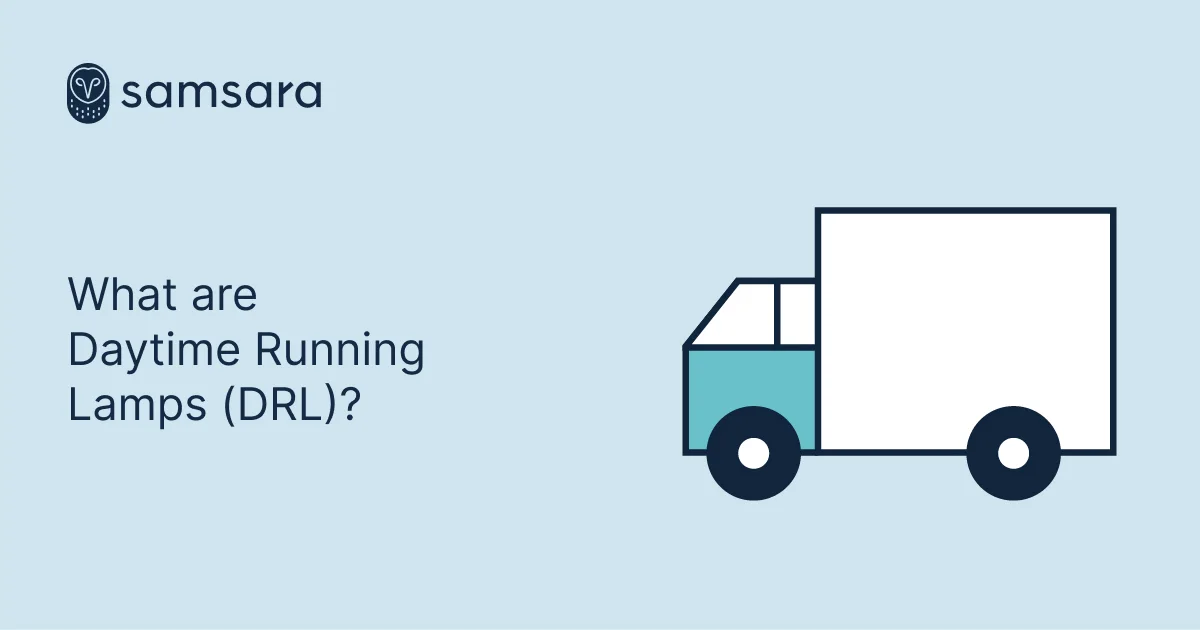What are Daytime Running Lamps (DRL)?
October 25, 2021

Get Started with Samsara
Check Our PricesKey Takeaways
Daytime running lamps (DRL) are not intended to help drivers see the road better; they help other drivers see you better. While not a substitute for headlights or fog lights, vehicles have been equipped with DRLs since the 1990s. Learn more about their origin and regulations.
What are daytime running lamps (DRL)?
Daytime running lamps (DRL) are automotive lighting devices on the front of motor vehicles that automatically switch on when the engine is running. They are also called daytime running lights.
Not to be confused with headlights, the purpose of the DRL is not to help drivers see the road or their surroundings better. The DRL’s intended purpose is to help other road users see your vehicle better.
Because DRLs are not designed to illuminate the road, they are often made with LED lights instead of halogen headlight bulbs. LED DRLs are long-lasting, energy-efficient, and give off a bright white light.
DRL vs. headlights vs. fog lamps
During the day, most drivers turn their headlights off. A DRL enhances road safety by helping drivers see other vehicles quickly.
DRLs are also not fog lamps. When driving, fog lights cut through fog without causing glare. Typically, vehicles have two sets of fog lights. One is in the front of the vehicle, acting as headlights. The other is located on the rear as a tail light. DRLs are not meant to substitute headlights.
DRL origin
DRLs were first mandated in Sweden in 1977. Other Scandinavian countries and Canada soon followed suit. They became more popular in Northern countries where there is less ambient daylight during Winter months. Vehicle manufacturers Saab and Volvo were the first to implement DRLs.
In 1990, American automaker General Motors (GM) petitioned the U.S. National Highway Traffic Safety Administration (NHTSA) to allow U.S. vehicles to be equipped with DRLs, similar to Canada. After several years of mixed reaction from the public and industry, the same types of DRLs allowed in Canada were permitted but not required effective with the 1995 model year. Since then, automakers in the U.S. market (including Chevrolet, Toyota, Ford, and Audi) began equipping most of their vehicles with some form of DRLs.
For example, Lexus has installed high-beam or turn signal-based DRLs on several of their models. Honda began including DRLs on their U.S. models in the form of reduced-intensity high beam headlights.
DRL regulations in Canada and the U.S.
DRLs are mandated in Canada. According to Canada Motor Vehicle Safety Standard 108, all new vehicles made or imported after January 1, 1990 must have DRL. The standard permits the use of reduced-voltage high beam headlamps, as well as any lightbulb color from white, amber, and some yellows.
There are no mandates for DRLs in the U.S. While they are legal to use, they are not required. In 2001, General Motors petitioned to have the NHTSA mandate the use of DRLs on all U.S. vehicles. However, the petition was denied in 2009, with the NHTSA citing that GM’s evidentiary studies and data contained flaws.
While several U.S. states require headlights to be switched on when using windshield wipers, DRLs are not considered headlights in most vehicle codes. Thus, they will not meet this requirement.